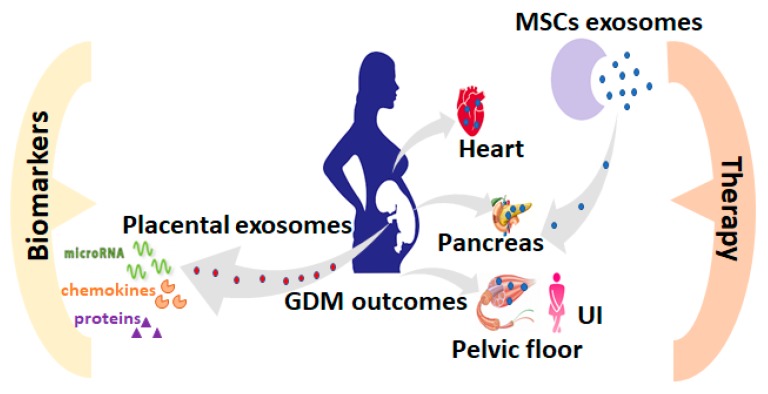Figure 1.
Overview of the potential impact of exosome in GDM. The therapeutic approach is shown on the right side: “Therapeutic” exosomes (from mesenchymal stem/stromal cells or alternative sources) could be used to reduce the negative impact of GDM on cardiovascular disease (exemplified by the heart in the figure), diabetes mellitus (simplified by the pancreas) and on the myopathy of pelvic floor and rectus abdominis muscle, which contribute to urinary incontinence (UI) up to 2 years postpartum. The diagnostic approach is shown on the left side: Through the exosomal content profile, new biomarkers of GDM onsets (diagnostic biomarkers) and post-GDM negative outcome (diagnostic and prognostic biomarkers) could be developed to improve the treatment of the GDM and the outcome for the mother and child.

